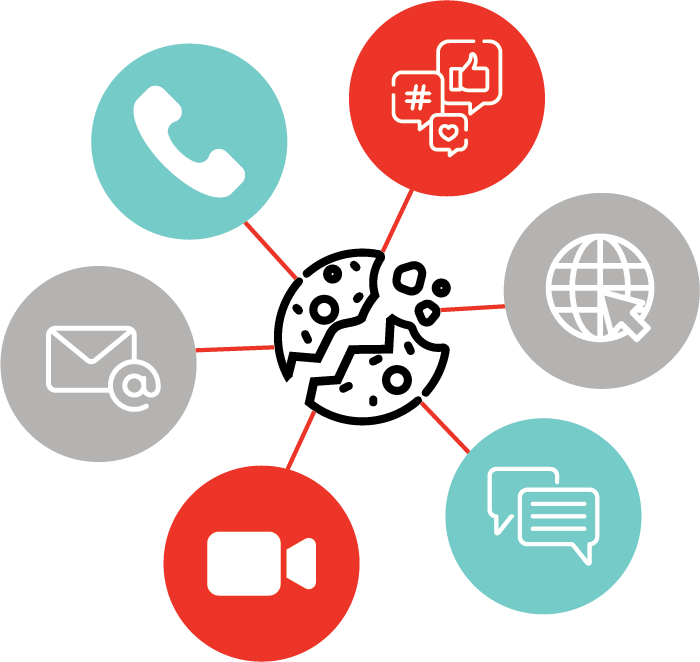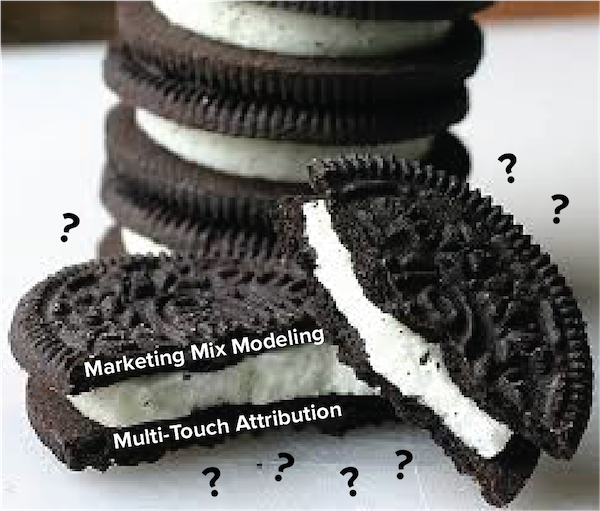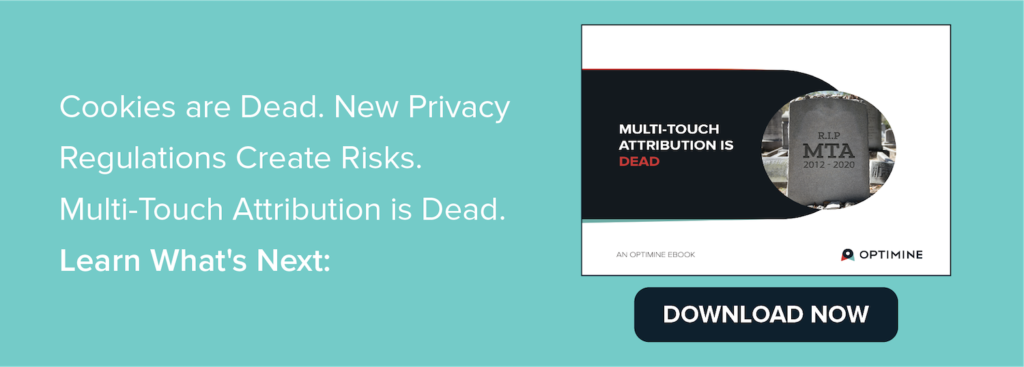Why We Need To Redefine Unified Marketing Measurement
01/25/2021

We are currently in a period of massive marketing data disruption. Several forces have collided to alter the data landscape permanently while the market urgently seeks alternative ways to track advertisements across devices and consumer identities. Cookies are dying (finally), Apple is singlehandedly forcing privacy protocols in mobile, Facebook’s own attribution tools have been hobbled, all while consumer data privacy and the regulations that go with it are rapidly gaining momentum.
With this disruption comes the need to re-define “Unified Measurement.” Why? Because the Unified Measurement you knew as recently as a year ago no longer works to serve as a future-proof approach to a brand’s marketing measurement success. Now is the time to re-define Unified Measurement.
What is Traditional Unified Measurement?
In short, traditional Unified Measurement combined two main measurement approaches: Marketing Mix Modeling and Marketing Attribution, creating (what was thought to be) a fully “unified” form of marketing measurement. Its goal was to gain a comprehensive understanding of the overall performance of marketing efforts across different platforms and strategies.
Why Was Traditional Unified Measurement Necessary?
When Unified Measurement became a concept in the marketplace, it was to solve a problem whereby no single measurement approach could cover the entire sphere of measuring digital and traditional media across both online and offline converting outcomes. Digital attribution solutions fail to measure traditional media and offline conversions while traditional marketing mix modeling failed to deliver detailed measures at campaign levels. The answer? Merge the two. So, the market was left with a definition of Unified Measurement that includes two primary components:
- “Top Down” strategic marketing measurement and planning more commonly associated with Marketing Mix Modeling
- “Bottom UP” tactical marketing measurement at more detailed campaign levels – primarily in digital marketing channels – using Multi-Touch Attribution
The marketing industry, including industry analysts such as Forrester Research, were overly prescriptive about the combination of Marketing Mix Modeling and Multi-Touch Attribution as the Unified Measurement combination of methodologies, largely ignoring the fact that putting the two methods together produced conflicting answers and large gaps in measurement. Vendors came up with ways to paper over such conflicts and gaps by “merging” the answers into a “unified measurement framework.”

Why Traditional Unified Measurement No Longer Works
Traditional Unified Measurement no longer works in today’s world, with data disruption hitting the marketing and marketing measurement industry in a significant way:
- Cookie Death
- Tracking restrictions – Apple’s ITP and IDFA changes that block consumer tracking on nearly 50% of the US mobile devices and any Safari-based internet use
- New state-by-state privacy regulations that foreshadow even more regulatory risks with consumer identity data AND create new gaps in data and identity matching
- Poor identity matching rates that drain attribution accuracy and confidence
- Tectonic consumer behavior shifts originally driven by the pandemic which curtail the use of non-relevant historical data in traditional marketing mix models
The Multi-Touch Attribution Half of Unified Measurement is Dead
The data disruptions now place at least half of the Unified Measurement layer into serious jeopardy as multi-touch attribution solutions no longer provide accurate measures nor represent a long-term future-proof option for brands. It is no longer viable to rely on Multi-Touch Attribution (“MTA”) to be an accurate, tactical guide especially for brands that have a offline converting outcomes such as brick-and-mortar stores, sales agent channels, physical branches, call centers and other non-digital touchpoints. And MTA was never accurate anyway.
The New Definition of Unified Measurement
Simply put, the new “Unified Measurement” is flexible, fast, future-proof marketing measurement that focuses on driving continuous marketing and business performance improvement with agile analytics.
Going into more detail – with all of the current challenges impacting marketing measurement, marketers are looking for more flexibility, speed, and future-proofing against data disruption and ultimately for agility. The new Unified Measurement must provide agility to address the needs of the business at the speed of the market and must be reliable now and also in the future when the consumer data sphere will be:
- More limited
- Less reliable
- And more risky
Moving away from the “how” to focus on “what” the marketing team will be able to do and “how” analytics will provide value to the enterprise, Unified Measurement will be defined as:
Agile Strategic Planning:
- Forward-looking strategic marketing budget planning
- Highly-flexible what-if media spend allocation scenarios
- Advanced optimizations across the entire marketing portfolio that account for all cross-channel effects of advertising (not just the channel silos)
- Rapid-cycle playbooks to the marketing team and partners for the most impactful investment strategies
- Controls for non-marketing factors to properly identify the incremental impacts of marketing investments
Agile Tactical & Actionable Measurement:
- Detailed campaign-level measurement for BOTH digital and traditional media campaigns, and the cross-channel impacts of each effort
- Rapid identification of performance lift across any KPI of importance (ROAS, ROMI, CPA, etc.) for any critical value (Revenue, Margin, Traffic, Acquisition, Loyalty, LTV, etc.)
- Actionable data and decisioning across critical dimensions such as geography, product types & taxonomies, customer segments, device types, creative treatments, ad formats, etc.
- Measurement of the total impact of a campaign across all online & offline outcomes
- Future-proof tactical measurement that doesn’t rely on consumer and cross-device tracking data
Agile Continuous Test & Learn Capability:
- Rapid measurement refreshes to support new campaign tests, channels and spend changes
- Ongoing persistent measurement across all channels to guide to the latest changes in market conditions and the performance shifts they are driving
- Tools and interfaces to track changes made to enable continuous scoring of results

With this new definition of Unified Measurement, we move away from older, failing methodologies especially since tracking-based attribution will no longer be a future-proof option for more tactical marketing measurement. Instead, the new Unified Measurement moves its focus to what matters most: driving continuous marketing and business performance improvement with agile analytics.
How to Incorporate Modern Unified Marketing Measurement into Your Business
Here is a general guide to help you implement modern Unified Marketing Measurement within your brand:
1. Define Your Objectives
Clearly outline your marketing objectives and goals. What do you want to achieve with your marketing efforts? Understanding your goals will help shape the metrics and data you need to measure.
2. Identify Key Metrics and KPIs
Determine the key performance indicators (KPIs) and metrics that align with your marketing objectives. These could include conversion rates, customer acquisition costs, return on investment (ROI), and other relevant metrics for your brand.
3. Select and Implement Measurement Tools
Choose appropriate tools and technologies for data collection and measurement. This may involve using analytics platforms, customer relationship management (CRM) systems, and other marketing tools that allow for integration and data sharing – but only tools that never rely on consumer identity tracking, PII, etc. for data. Privacy-safe is a must.
OptiMine is an agile, 100% future-proof software solution that will make Unified Marketing Measurement a breeze for your brand – the only measurement tool you’ll need, with everything all in one place.
4. Train Your Team
Provide training to your marketing and analytics teams to ensure they understand how to use the unified measurement tools (like OptiMine) effectively. This includes interpreting data, extracting insights, and making data-driven decisions.
5. Iterate and Optimize
Continuously monitor and evaluate the performance of your Unified Marketing Measurement approach. Use the insights gained to iterate on your strategies, optimize campaigns, and refine your measurement processes.
By following these simple steps, you can implement a modern unified marketing measurement strategy that allows for a more comprehensive understanding of your marketing efforts and their impact on overall brand objectives.
Contact us today to learn how OptiMine’s Unified Marketing Measurement solution can help your brand succeed!
Additional Resources:






